Nereis vexillosa Grube, 1851Common name(s): Banner sea-nymph, pile worm, sand worm, mussel worm, clam worm |
|
| Synonyms: | 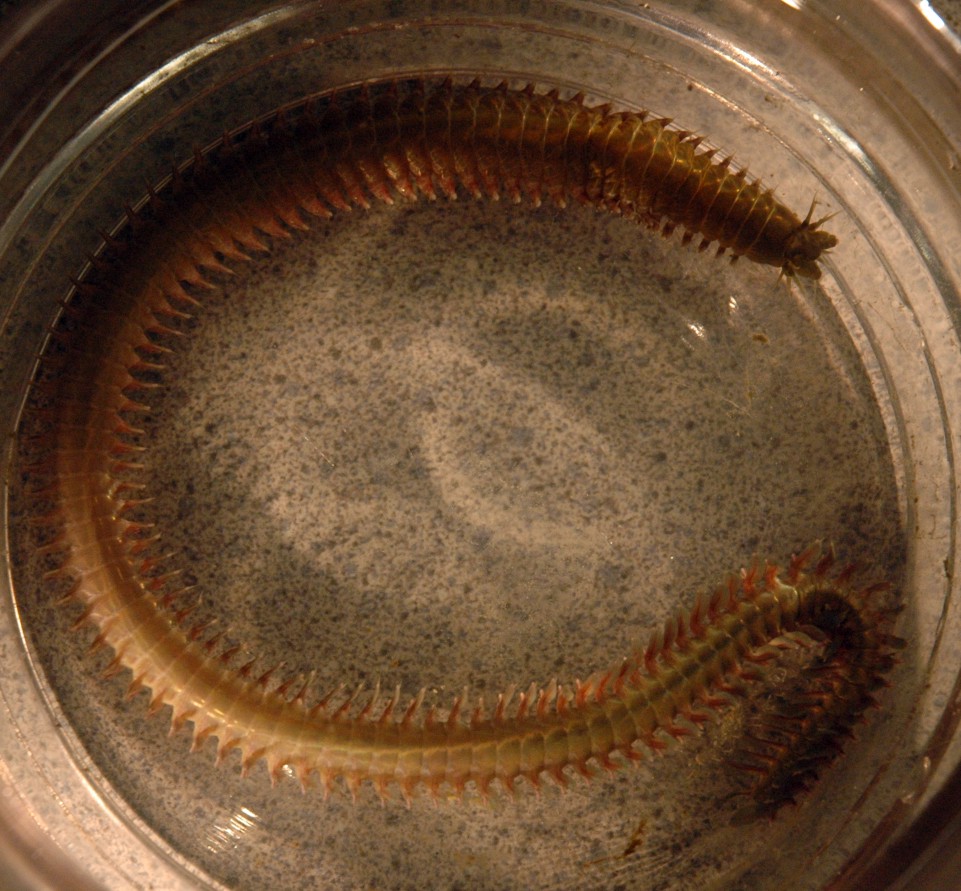 |
|
Phylum Annelida
Subclass Palpata
Order Aciculata
Suborder
Phyllodocida
Family Nereididae
(formerly Nereidae)
|
|
| Nereis vexillosa, about 24 cm long, found at Padilla Bay. | |
| (Photo by: Dave Cowles, July 2009 ) | |
How to Distinguish from Similar Species: The large, strap-shaped upper ligule in the posterior notopodia is very helpful in identifying this species. In Nereis grubei and N. neoneanthes the upper ligule of the posterior notopodia is not strap-shaped. Nereis wailesi has no paragnaths on the distal proboscis. Nereis brandti has no homogomph falcigerous setae on the posterior notopodia and the dorsal ligule of the parapodia is large and leaflike.
Geographical Range: Alaska to San Diego; Pacific coast of Russia
Depth Range: Mid to low intertidal
Habitat: Intertidal with mussels and barnacles, on pilings, in sandy mud and cobbles, and in algal holdfasts.
Biology/Natural History: The large jaws on the distal portion (maxillary ring) of the eversible pharynx are used for seizing prey or tearing algae (Nereids usually eat algae). The smaller denticles (paragnaths) on the proximal portion (oral ring) are used for burrowing.
Family Nereididae are called sea nymphs and are common polychaete worms in this area. Intertidal species are sometimes called ragworms. Nereids reproduce by releasing parts of their body as epitokes, which swim to the surface in mating swarms. Nereid epitokes are swollen with eggs or sperm, large parapodia, paddle-like chaetae, and large eyes. Day length is important in swarming of epitokes, and near-shore lights can affect the timing of swarms. In our area, spawning may occur shortly before midnight. The mating swarms release pheromones into the water which induces mating activity. The male epitokes swarm first and the females will not release their eggs unless in the presence of the males. The eggs are released into the water in the swarms, through ruptures in the body walls. In N. vexillosa the female releases an agglutinating material along with her eggs. Both male and female epitokes (heteronereids) die after spawning. The mass, with eggs inside, sinks to the bottom and grows to about the size of a bluish-green chicken egg. Larvae remain as plankton for hours to months. In the Pacific Northwest the mating swarms usually occur in late winter or spring.
This worm is often used for fishing bait. It squirms
violently and everts
its proboscis
and
jaws when captured, and may bite.
| Return to: | |||
| Main Page | Alphabetic Index | Systematic Index | Glossary |
References:
Dichotomous Keys:Carlton, 2007
Flora and Fairbanks, 1966
Kozloff, 1987, 1996
General References:
Harbo,
1999
Johnson
and Snook, 1955
Kozloff,
1993
Lamb
and Hanby, 2005
Niesen,
1994
Niesen,
1997
O'Clair and O'Clair
Ricketts
et al., 1985
Scientific Articles:
Web sites:
General Notes and
Observations: Locations,
abundances, unusual behaviors:
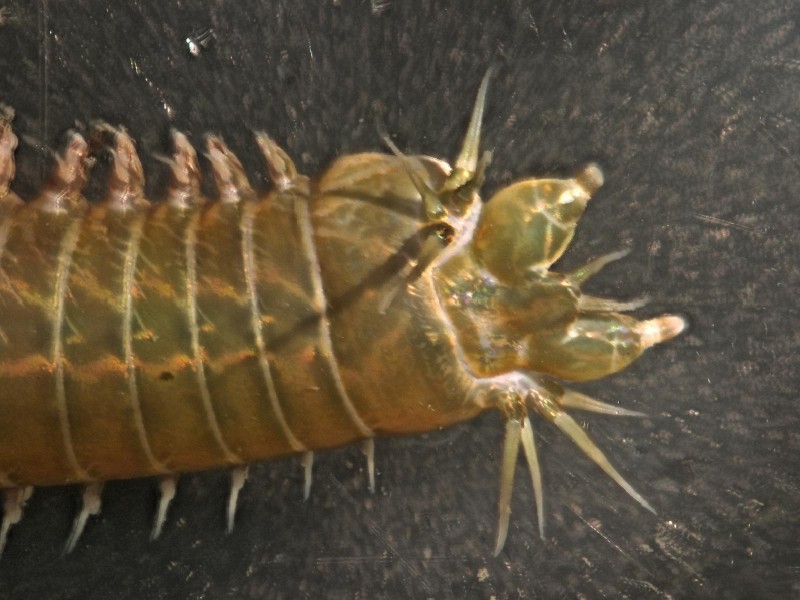
The prostomium
(right) has two antennae
and two large, two-segmented palps.
The peristomium
(segment behind the prostomium)
has 4 pairs of tentacular
cirri. This photo is a 3d composite made from a
series of photos
using a Keyence digital microscope. Photo by Dave Cowles,
July 2009
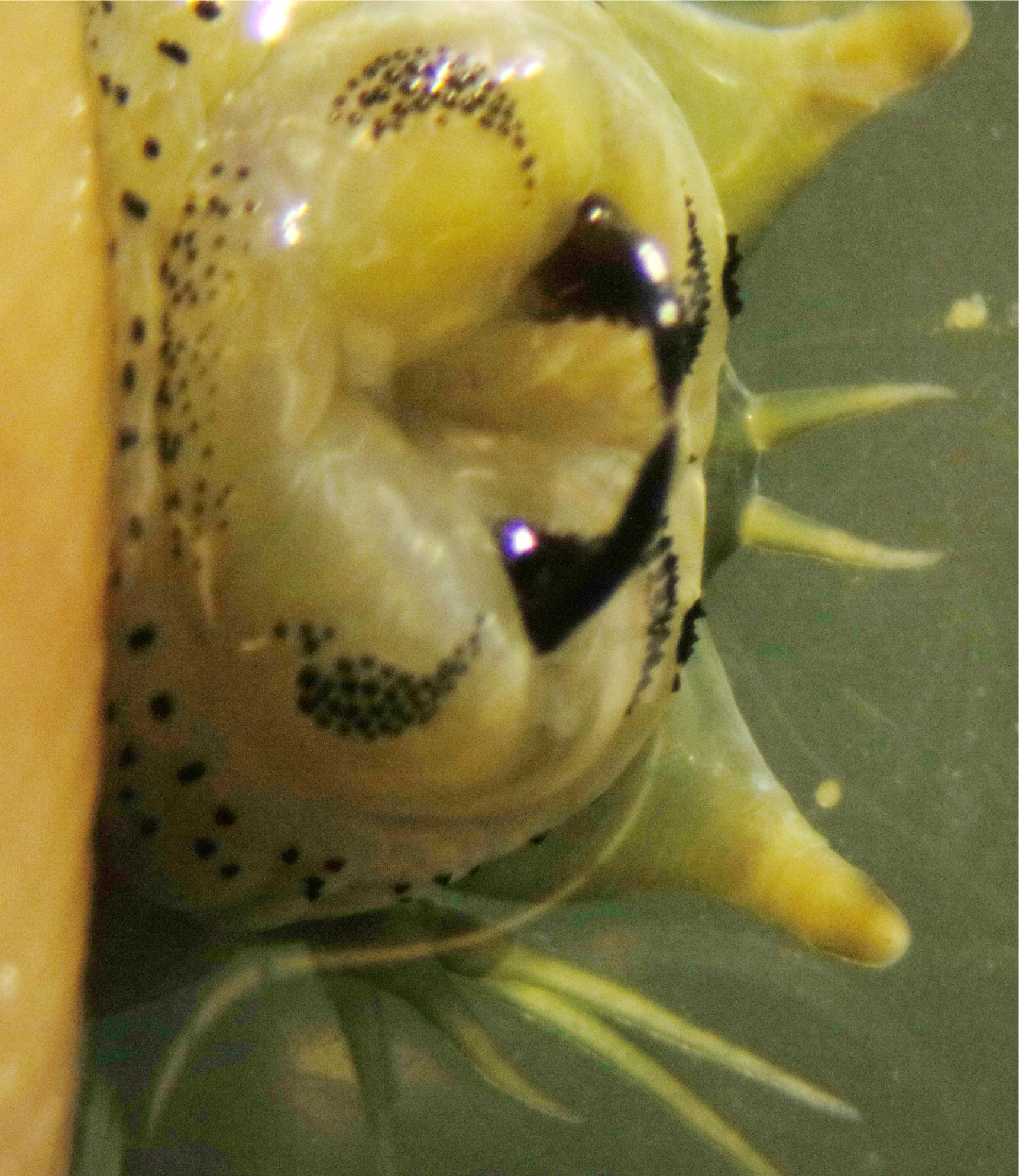
This ventral
view
of the partially distended pharynx
shows the large grasping jaws on the anterior portion and the sets of
smaller
conical teeth (paragnaths)
on several of the sections. The pharynx
is being distended because of pressure from my finger, which is visible
on the extreme left. Photo by Dave Cowles, June 2020
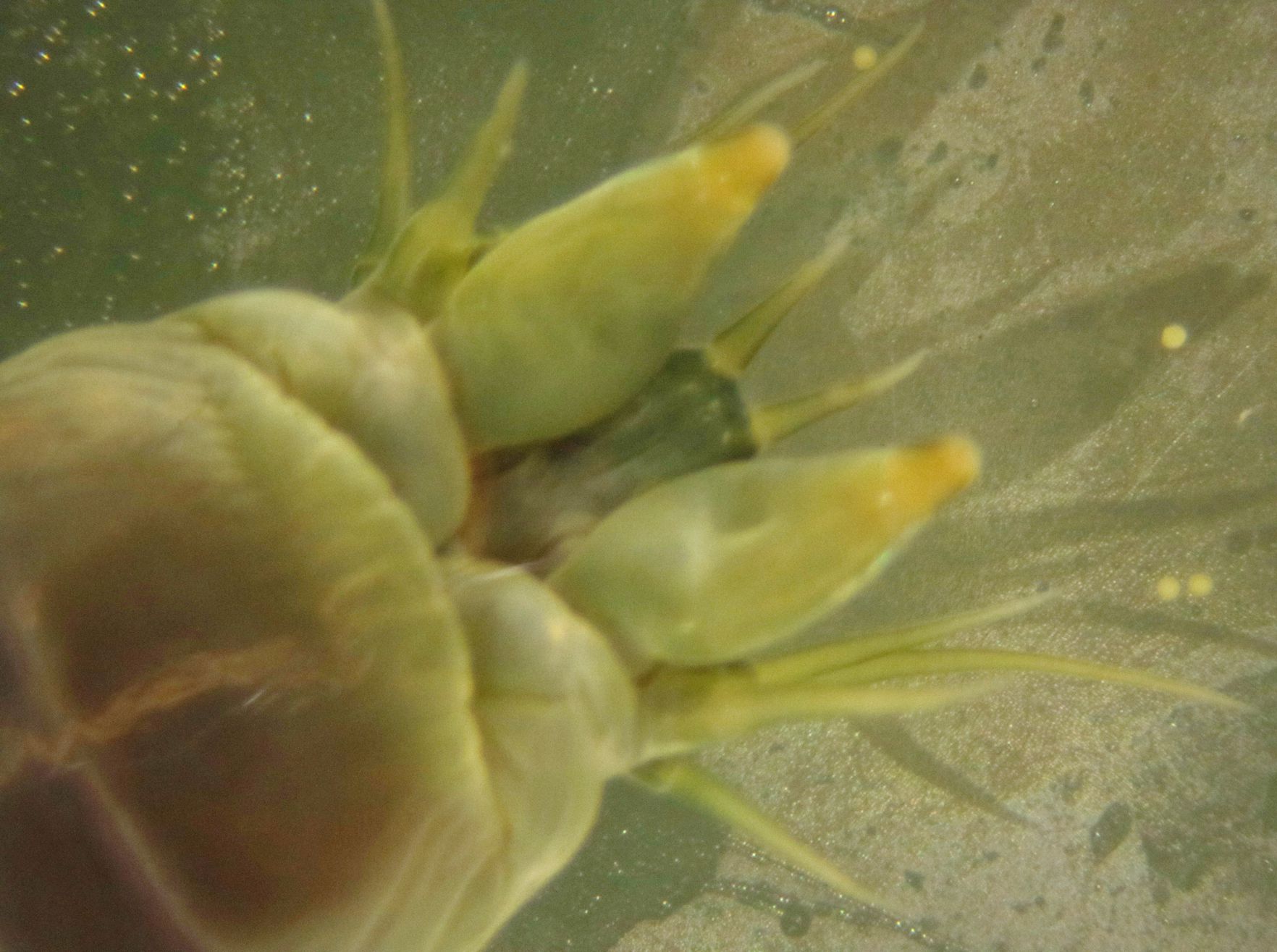
This ventral
view
of the prostomium
and peristomium
of the same individual with the distended pharynx
above shows the undistended configuration. The prostomium
extends anterior to the peristomium
(to the right in this view) dorsally to the larger peristomium
(to the left in this view). The pharynx
is not visible because it is within the slitlike mouth on the peristomium.
Photo by Dave Cowles, June 2020
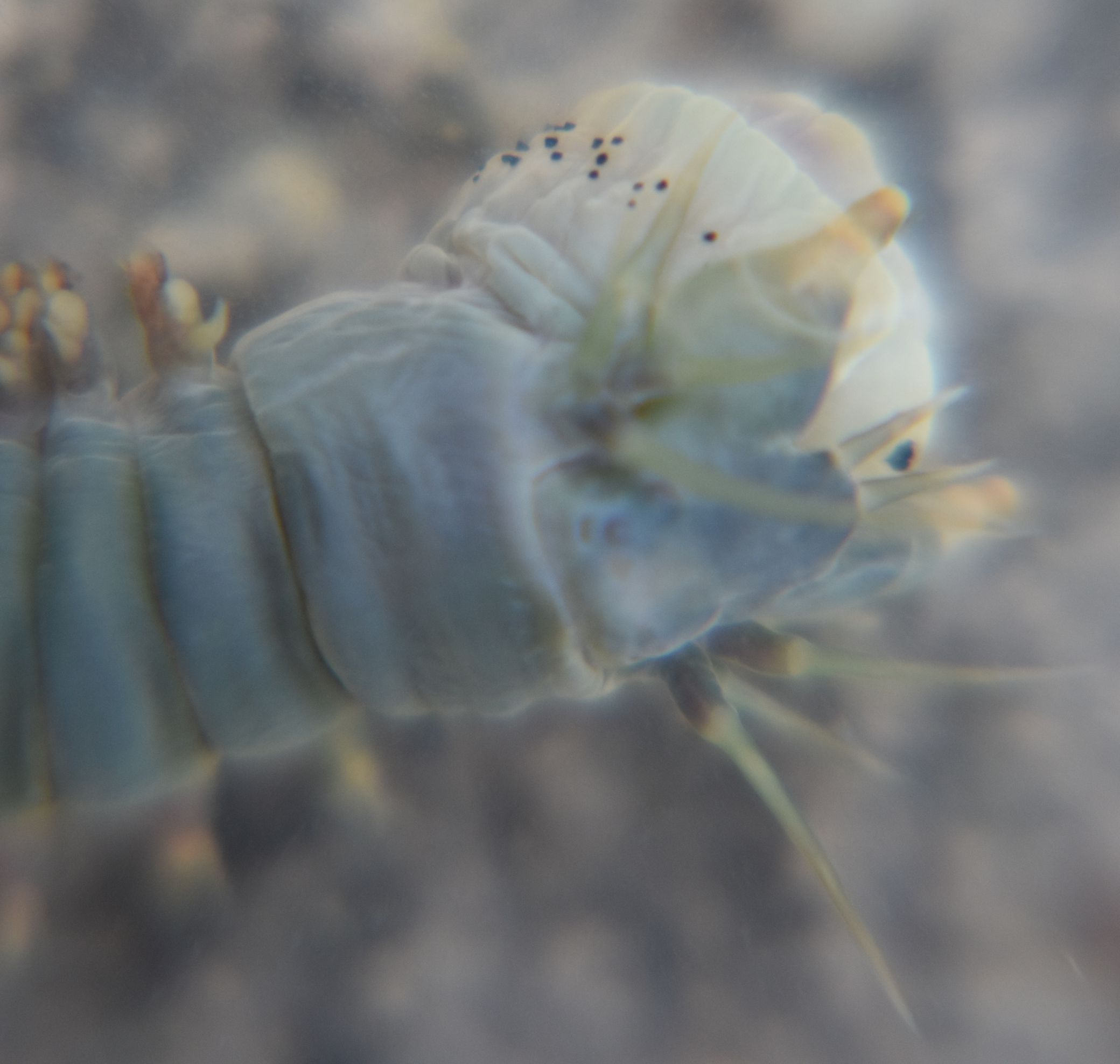
This dorsal
view
of the same individual shows a partly distended pharynx
from above. The pharynx
is not quite distended enough in this view to see the large anterior
grasping
jaws. but some of the paragnaths
are visible. Photo by Dave Cowles, June 2020
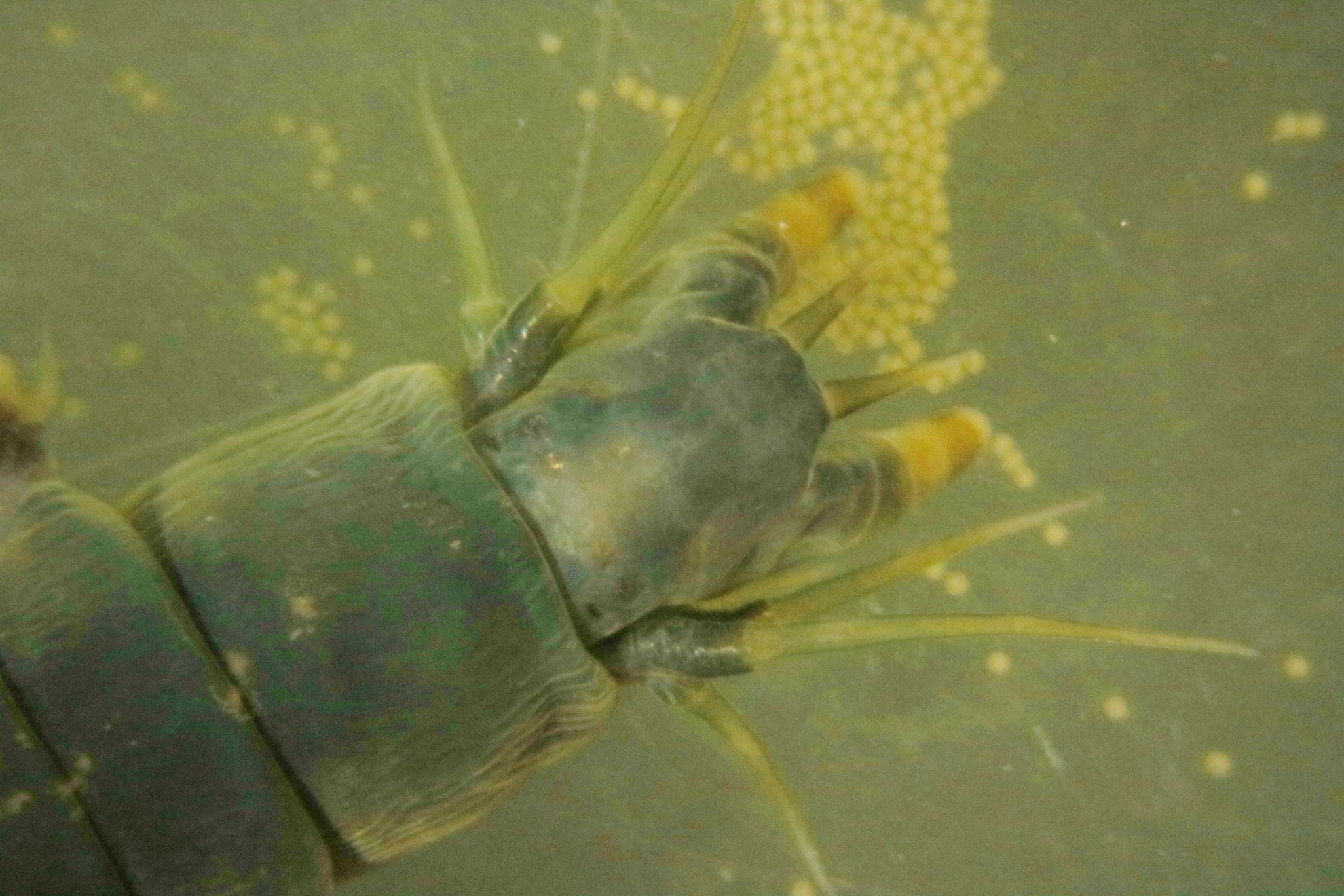
This individual kept gradually releasing eggs while being examined.
Many female polychaete worms store their eggs in their coelom (body
cavity)
and release them through ruptures in the body wall. Where the eggs were
being released from this individual was not obvious--no large ruptures
were apparent. Nereids
release their
eggs from a modified body or part of the body called an epitoke
so this individual is either already an epitoke
or is nearly ready to be modified into one. No agglutinating material
seemed
to be sticking these eggs together either, so the release of eggs was
not
as normally done in this species. Photo by Dave Cowles, June 2020
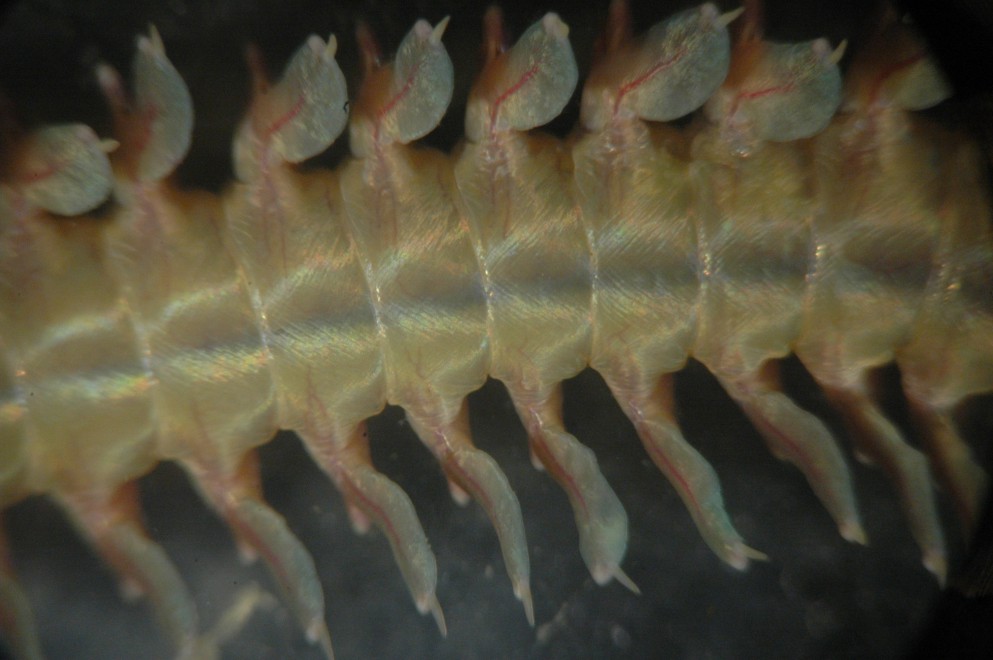
This dorsal
view
of the posterior body shows the prominent, straplike
ligules
with attached terminal
cirrus
which are characteristic
of this species.

This dorsal
view
of the parapodia
shows the small aciculae
with large ventral
and
even larger dorsal
lobes
(ligules).
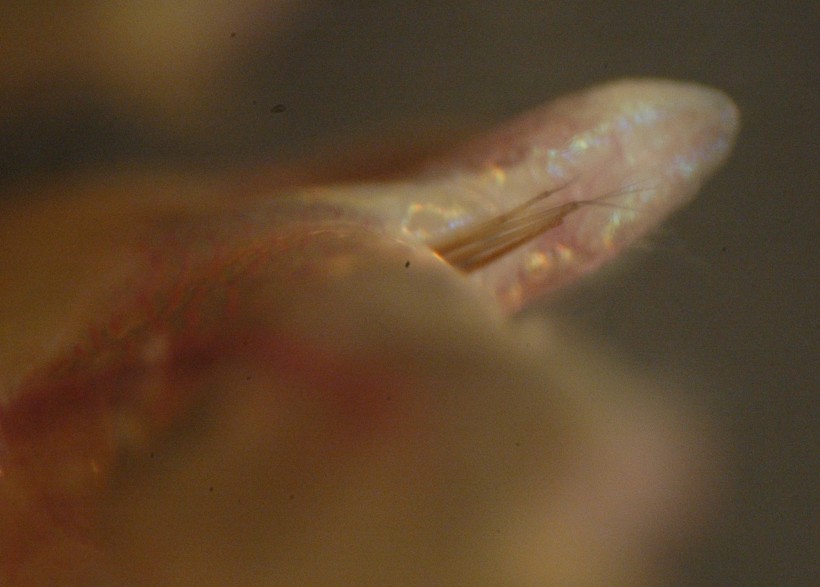
Most of the setae
are
compound (composed of more than one segment).
Closer examination by compound microscope would show this to be a homogomph
falcigerous
seta.
A falciger
is a seta
in which the tip is comparatively blunt and curved. A homogomph
seta
is a compound seta
in which the basal segment ends in a slightly expanded capsule, the two
sides of which are of approximately equal height (as opposed to heterogomph,
in which one side of the capsule is extended well out past the other).
Authors and Editors of Page:
Dave Cowles (2009): Created original page
CSS coding for page developed by Jonathan Cowles (2007)